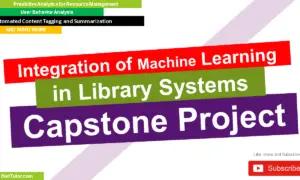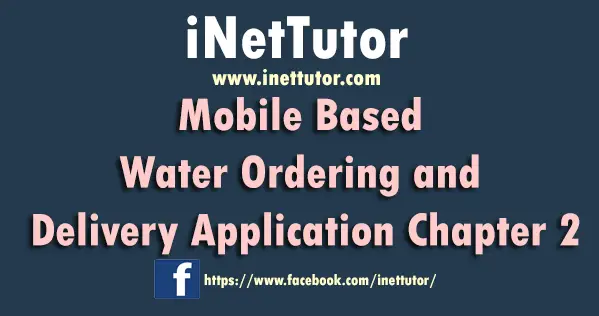IT Projects on Social Good and Humanitarian
Introduction
Table of Contents
Social Good and Humanitarian Projects focus on solving pressing societal and global issues like poverty, health, education, and disaster relief. These projects aim to create a positive impact on communities and improve the well-being of individuals, especially those in need. Whether through education, healthcare, or environmental conservation, social good initiatives target long-term benefits for society.
Information Technology (IT) plays a crucial role in driving social good by providing tools and platforms that address these challenges more effectively. From mobile apps for healthcare to data-driven disaster response systems, IT solutions help deliver resources, enhance communication, and improve the quality of services to underserved populations.
The impact of technology on social causes is transformative. It empowers organizations, governments, and individuals to connect and collaborate on a global scale, offering innovative ways to tackle problems like inequality, climate change, and humanitarian crises.
Key Areas Where IT Can Drive Social Good
Information Technology (IT) has the potential to drive significant positive change in addressing social challenges. By leveraging innovative tools and platforms, IT can improve access to education, healthcare, and environmental sustainability, while also empowering human rights advocacy and enhancing disaster response. From digital learning platforms to telemedicine and crisis management systems, IT solutions are helping solve critical societal issues and fostering greater global impact. In this section, we’ll explore the key areas where IT is making a difference for social good.
- Education
Information Technology is revolutionizing education, especially through digital learning platforms and EdTech solutions. These tools provide access to quality education for underprivileged communities and remote areas. Online courses, interactive learning apps, and virtual classrooms enable students to learn from anywhere, bridging the educational gap. - Healthcare
In healthcare, IT solutions such as telemedicine and health monitoring apps are improving patient care and accessibility. Patients in remote or underserved areas can consult doctors virtually, receive accurate diagnoses, and monitor their health conditions in real time. Advanced technologies like AI for diagnosis are also enhancing the accuracy of medical treatment. - Environment
IT plays a key role in promoting environmental sustainability. Tools like climate monitoring systems and waste management platforms help monitor and reduce the impact of human activity on the environment. Data-driven insights assist in decision-making for conservation efforts, reducing pollution, and managing resources more effectively. - Human Rights and Advocacy
Technology enables platforms that support activism and crowd-sourced reporting of human rights violations. Social media, online petitions, and secure reporting systems allow people to raise awareness and demand justice. IT empowers individuals to amplify their voices and hold organizations and governments accountable. - Disaster Response and Management
IT solutions are crucial in disaster response. Early warning systems use real-time data to predict and alert communities of impending natural disasters, saving lives. Crisis mapping tools help track affected areas and direct resources where needed, while communication networks ensure effective coordination of relief efforts.
Project Ideas and Development Tools
Here are 15 project ideas for social good and humanitarian efforts, along with brief descriptions and suggested development tools:
- Mobile Application for Emergency Response
- Description: A mobile app that allows users to report emergencies, track disaster situations in real-time, and receive immediate assistance. It can feature location tracking for first responders and live updates on ongoing relief efforts.
- Development Tools: Flutter, Firebase, Google Maps API, Twilio for SMS
- Web Platform for Volunteer Coordination
- Description: A web platform that connects volunteers with non-profit organizations, facilitating communication and task assignments during crises or social initiatives.
- Development Tools: Django, React.js, PostgreSQL, AWS, WebSocket for real-time updates
- Data Analytics for Crisis Prediction (e.g., COVID-19 Dashboard)
- Description: A dashboard that aggregates data from various sources to predict and visualize the spread of a disease or natural disaster, helping governments and organizations allocate resources effectively.
- Development Tools: Python (Pandas, Matplotlib), D3.js, Tableau, MongoDB
- AI for Resource Allocation in Disaster Zones
- Description: A machine learning model that optimizes the distribution of aid, food, and medical supplies based on real-time data from disaster-affected regions.
- Development Tools: TensorFlow, Python (Scikit-learn), Google Cloud AI, REST API for data collection
- Blockchain for Transparent Donations
- Description: A blockchain-based platform that tracks donations from donors to beneficiaries, ensuring transparency and reducing fraud in humanitarian aid.
- Development Tools: Ethereum, Solidity, Truffle, IPFS, MetaMask
- Telemedicine Application for Remote Healthcare
- Description: An app that allows patients in remote areas to consult doctors through video calls, upload medical reports, and receive prescriptions.
- Development Tools: React Native, WebRTC, Firebase, Twilio API for video calls, AWS
- Waste Management and Recycling Tracking System
- Description: A system that helps monitor and manage waste collection and recycling activities in urban areas, ensuring efficient waste management and reduced environmental impact.
- Development Tools: Node.js, React, MongoDB, Google Maps API, Docker
- Digital Learning Platform for Underprivileged Students
- Description: An online platform providing free educational resources, courses, and virtual classrooms for students in underdeveloped regions.
- Development Tools: Moodle, PHP, MySQL, jQuery, Bootstrap
- Mental Health Support Chatbot
- Description: A chatbot that offers mental health support and resources to users, providing self-care tips, guidance, and access to professional help when needed.
- Development Tools: Rasa, Dialogflow, Node.js, MongoDB, Twilio for text and voice interaction
- IoT-Based Flood Monitoring System
- Description: A system that uses IoT sensors to monitor water levels in flood-prone areas, sending real-time alerts to local authorities and residents.
- Development Tools: Arduino, Raspberry Pi, Node-RED, MQTT, AWS IoT Core
- Crowd-sourced Human Rights Reporting Platform
- Description: A secure platform that allows users to anonymously report human rights violations, with real-time tracking of reported incidents.
- Development Tools: Laravel, Vue.js, MySQL, Google Maps API, AWS for cloud storage
- Sustainability Tracking App for Households
- Description: A mobile app that helps households track their energy consumption, waste generation, and carbon footprint, providing tips for sustainable living.
- Development Tools: Flutter, Firebase, Google Fit API, GraphQL for data queries
- Food Donation and Distribution Platform
- Description: A web-based platform that connects food donors (restaurants, grocery stores) with local shelters and food banks to minimize food waste and distribute resources efficiently.
- Development Tools: Ruby on Rails, PostgreSQL, Twilio for notifications, Stripe for payment/donation integration
- AI-Powered App for Mental Health Crisis Prediction
- Description: A machine learning model that analyzes social media data and user behavior to predict potential mental health crises, providing timely intervention and support.
- Development Tools: Python (Keras, TensorFlow), Flask, SQLAlchemy, Google Cloud Natural Language API
- Disaster Relief Communication Network
- Description: A peer-to-peer communication app that allows users in disaster-affected areas to send emergency messages and coordinate relief efforts even without internet access.
- Development Tools: React Native, Mesh networking protocols, Firebase, Twilio for SMS communication
Each project idea leverages modern technologies to address social and humanitarian challenges, making a meaningful impact on society while promoting innovation.
Future Trends and Innovations
As technology continues to evolve, new innovations are reshaping the way humanitarian efforts are conducted. Emerging trends like Artificial Intelligence (AI), the Internet of Things (IoT), and immersive technologies such as Virtual Reality (VR) are transforming how organizations predict, respond to, and raise awareness about social issues. These advancements not only enhance the effectiveness of aid delivery but also open up new possibilities for proactive interventions and global engagement. In this section, we explore the future trends and innovations poised to drive significant impact in social good and humanitarian efforts.
- AI and Machine Learning in Predictive Humanitarian Efforts
Artificial Intelligence (AI) and Machine Learning (ML) are becoming critical tools for predicting and responding to humanitarian crises. By analyzing vast amounts of data, AI can forecast disasters like floods or famine, allowing for proactive measures to save lives. ML algorithms can also optimize resource distribution, ensuring aid reaches the most vulnerable populations efficiently. - Internet of Things (IoT) for Real-Time Monitoring and Aid Delivery
The Internet of Things (IoT) enables real-time monitoring in humanitarian efforts, such as tracking environmental conditions or managing supply chains. Sensors and connected devices help gather data from disaster zones or remote locations, offering live insights to aid workers. IoT can also streamline logistics, ensuring timely delivery of medical supplies, food, and other essential resources. - Virtual Reality (VR) and Augmented Reality (AR) for Social Awareness Campaigns
VR and AR technologies are gaining traction in creating immersive experiences that raise awareness about social issues like poverty, war, or climate change. These technologies help individuals experience the realities faced by marginalized communities, fostering empathy and driving action. Organizations can use VR/AR for powerful social campaigns, educating and engaging global audiences. - Drones and Robotics for Aid Delivery in Inaccessible Regions
Drones and robotics are revolutionizing aid delivery, particularly in hard-to-reach areas impacted by natural disasters or conflicts. Drones can quickly transport medical supplies, food, and other necessities to regions inaccessible by traditional means. Robotics, meanwhile, can be deployed to assist in search-and-rescue missions, providing relief workers with critical support in dangerous environments. These innovations significantly reduce response times and improve the overall efficiency of humanitarian operations.
Conclusion
In summary, Information Technology (IT) is playing a transformative role in addressing social and humanitarian challenges across key areas like education, healthcare, environment, human rights, and disaster response. From AI-driven resource allocation to IoT-powered real-time monitoring, technology is enabling more effective and impactful solutions for communities in need.
As global issues like inequality, climate change, and disaster risks grow more complex, the need for innovative IT solutions becomes increasingly urgent. The integration of emerging technologies such as AI, blockchain, and IoT offers immense potential to enhance the reach and efficiency of humanitarian efforts.
IT professionals are uniquely positioned to contribute to this important cause. By engaging in projects that drive social good, you can leverage your skills to create meaningful, lasting change in the world. Now is the time to take action, explore new possibilities, and use technology to make a positive impact on society.
You may visit our Facebook page for more information, inquiries, and comments. Please subscribe also to our YouTube Channel to receive free capstone projects resources and computer programming tutorials.
Hire our team to do the project.


